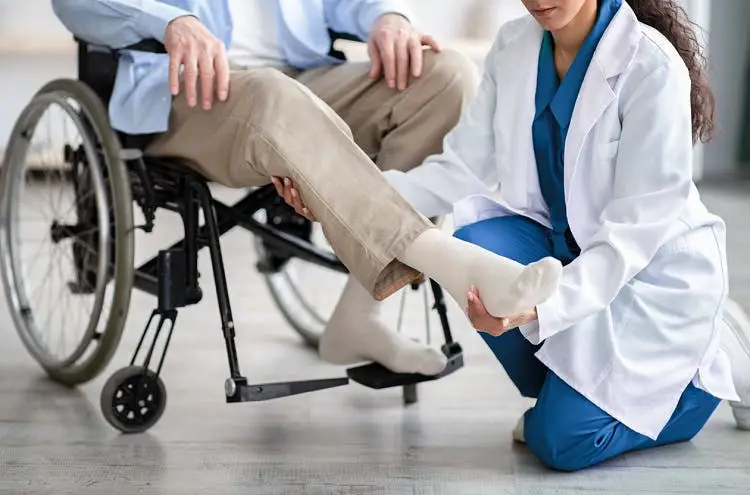Paralysis is a life-altering condition that affects muscle function and can be caused by different things like spinal cord injuries, strokes, or neurological diseases. Fortunately, recent Making progress in medical science has introduced modern treatment options that offer new hope and improved quality of life for people living with paralysis. This blog will explore some of the most effective and innovative treatments.
1. Stem Cell Therapy
Stem cell therapy is an exciting field in treating paralysis. It is about using stem cells to change into different types of cells, so they can fix or replace broken cells. Nerve cells. Researchers are actively studying how stem cells can regenerate damaged spinal cord injury tissues, and while it’s still in its experimental stages, initial results are promising. Some patients have shown partial improvement in mobility and sensation, making stem cell therapy a potential game-changer for paralysis treatment shortly.
2. Functional Electrical Stimulation (FES)
Functional Electrical Stimulation is a therapy that uses electrical impulses to activate paralyzed muscles. This technology helps improve muscle tone, blood flow, and, in some cases, muscle control. FES can be particularly effective for patients with spinal injury, enabling them to perform specific movements. Devices like FES bikes allow individuals to exercise their legs, which helps to prevent muscle atrophy and improves cardiovascular health.
3. Exoskeletons and Robotic-Assisted Therapy
Robotic-assisted devices like exoskeletons are becoming more widely used in rehabilitation. These wearable robotic systems support and stimulate walking in patients who have lost the ability to move their lower limbs. Exoskeletons aid in regaining movement, contribute to muscle strength and improve circulation. Although exoskeleton technology is still evolving, it has already helped many individuals regain mobility that wasn’t possible before.
4. Transcutaneous Electrical Nerve Stimulation (TENS)
TENS therapy is a non-invasive method that uses low-voltage electrical currents to relieve pain and encourage nerve function. It is commonly used in treating paralysis-related nerve pain and can aid in rehabilitation by encouraging nerve cells to communicate better with the muscles. Many patients find TENS beneficial, especially when combined with other therapies.
5. Virtual Reality (VR) Therapy
Virtual reality is emerging as a novel approach to rehabilitation for people with paralysis. Through VR, patients engage in simulated environments where they perform specific movements, stimulating brain activity related to motor functions. This “mental practice” has improved motor control and neural plasticity, aiding in recovering lost functions. VR is particularly useful in stroke rehabilitation, where patients practice movements encouraging neural pathways to re-establish.
6. Regenerative Medicine and Gene Therapy
Regenerative medicine, including gene therapy, is another promising area of research in paralysis treatment. Scientists are studying ways to manipulate genes and encourage nerve regrowth to repair damaged spinal cords. Although still experimental, this approach holds potential for future treatments that could restore nerve function and mobility.
7. Aquatic Therapy
Aquatic therapy involves working out in a pool, which can be particularly beneficial for People with paralysis. Water reduces pressure on the body and provides gentle resistance, allowing patients to move more freely and safely than on land. Aquatic therapy improves cardiovascular health, muscle strength, and flexibility, making it an excellent complementary treatment for rehabilitation patients.
8. Acupuncture and Alternative Therapies
Many patients with paralysis also explore alternative treatments like acupuncture, massage therapy, and chiropractic care. These therapies may help reduce pain, improve blood circulation, and support muscle relaxation, which can be particularly helpful when combined with conventional rehabilitation techniques.
Choosing the Right Treatment
Every case of paralysis is unique, and the best treatment option depends on the individual’s condition, cause of paralysis, and overall health. Consulting with a medical professional specializing in neurological rehabilitation is essential to creating a personalized treatment plan.
Final Thoughts
Modern treatments for paralysis are evolving rapidly, offering hope for improved recovery and improved quality of life. From cutting-edge technologies like exoskeletons and VR therapy to advancements in regenerative medicine, today’s options provide many pathways for healing. If you or a loved one is navigating paralysis, these treatments represent a significant step forward in achieving greater independence and quality of life.

